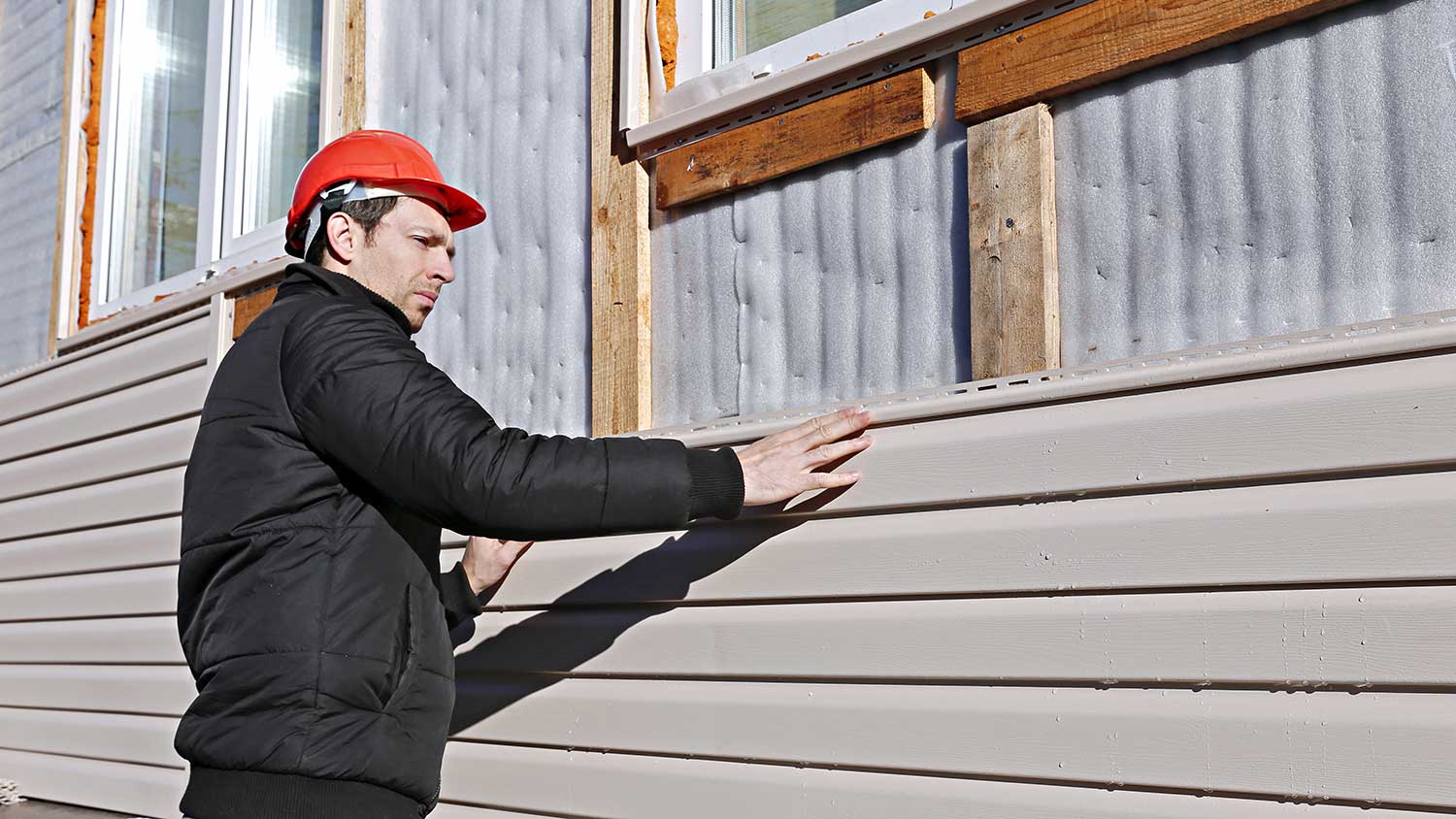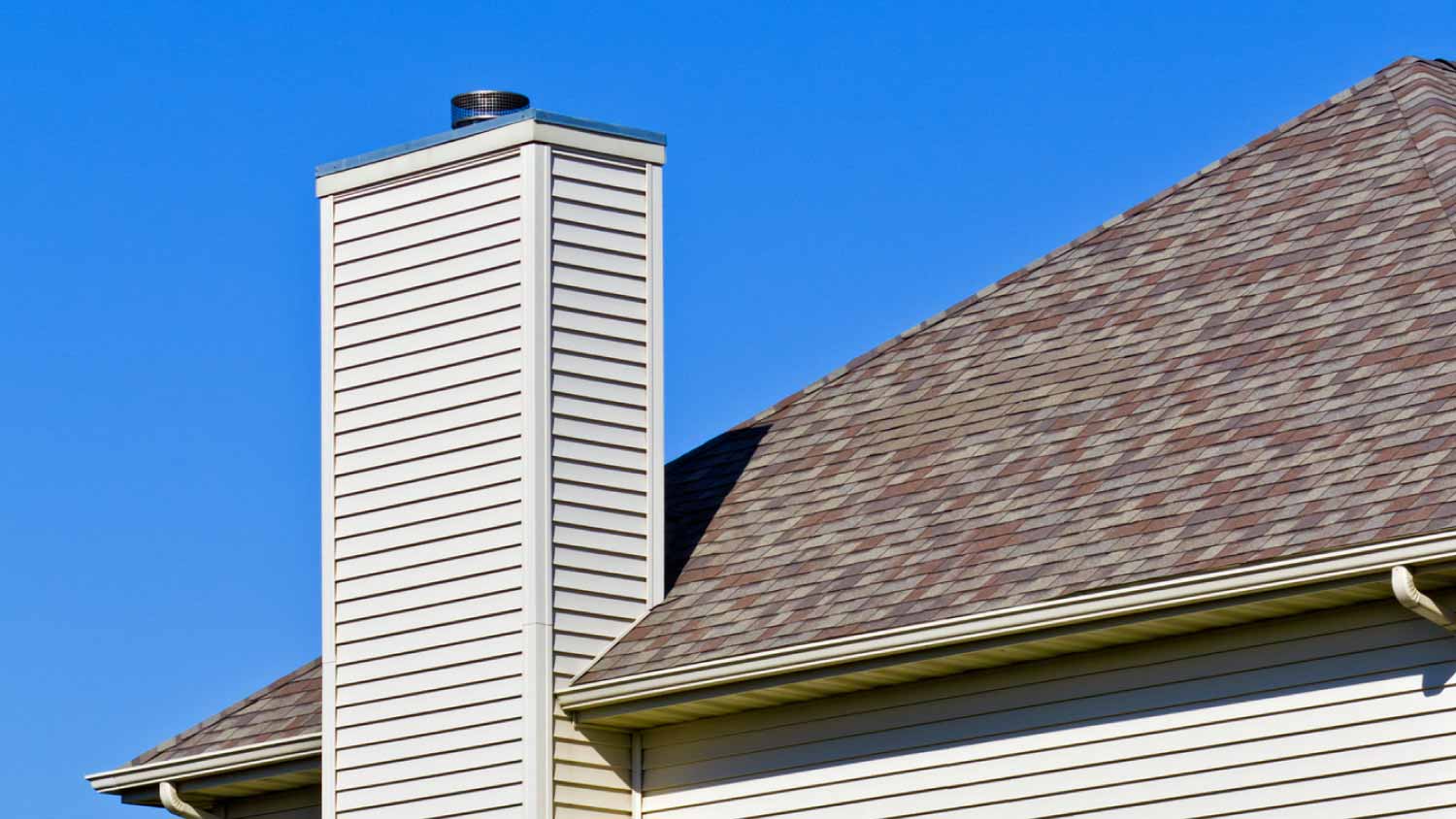
Budget for the cost to replace siding based on factors such as home size, siding type, materials, labor, removal, permits, and more.
Shou Sugi Ban siding costs an average of $22,000, but varies based on wood type, square footage, permits, and more.


On average, installing Shou Sugi Ban siding costs $22,000, with most homeowners paying between $7,000 and $33,000.
Shou Sugi Ban siding offers a unique and sophisticated look by charring wood surfaces.
Average costs range from $2 to $25 per square foot, depending on materials and labor.
The main cost factors include the type of wood, labor costs, location, and hiring a professional.
Hiring a Shou Sugi Ban siding professional is highly recommended for a safe, structurally sound, and efficient installation.
This article was created using automation technology and thoroughly fact-checked and edited by HomeAdvisor Editor Ryan Noonan.
Homeowners invest between $7,000 and $33,000, or an average of $22,000, to install Shou Sugi Ban siding. Costs are based on factors such as location, project size, wood quality, and labor. Selecting the right materials and an experienced contractor ensures your project not only fits your budget but also meets your highest expectations.
Several key factors influence the overall cost of your Shou Sugi Ban siding project. Understanding these elements can help you plan effectively and make informed decisions to ensure the best value for your investment.
The type of wood you use for charred wood siding significantly affects the overall cost of this project. The traditional wood choice for this process is cedar. If you’re looking for an economical solution, consider pine.
Siding prices vary based on availability. In some areas, certain types of wood may be more popular due to local availability, affecting the cost. For example, pine is readily available almost everywhere, so pricing tends to be consistent. On the other hand, quality hardwoods like oak may be more expensive due to transportation costs.
| Wood Type | Cost Range per Sq. Ft. | Average Cost per Sq. Ft. |
|---|---|---|
| Pine | $11–$15 | $13 |
| Spruce | $16–$22 | $19 |
| Cedar | $13–$20 | $17 |
| Oak | $14–$25 | $20 |
The choice of wood significantly impacts the cost. If you don’t already have existing wood siding at your home, you’ll need to purchase it from a local lumber yard or home improvement center. Hiring a professional takes this burden off you, as the installer will have their own sources for materials that they can generally acquire at a lower cost than you can.
Materials costs for Shou Sugi Ban siding vary by treatment: uncharred wood costs between $4 and $10 per square foot, while wood that has already been charred costs between $11 and $25 per square foot.
The cost of having a professional complete the Shou Sugi Ban charring process amounts to an average of $10 per square foot in labor costs.
When you include installation costs, your total average cost for buying and installing Shou Sugi Ban siding can range from $2 to $25 per square foot, with an average of $15 per square foot.
| Square Footage | Cost Range (All In) | Average Cost (All In) |
|---|---|---|
| 1,000 | $7,000–$15,000 | $11,000 |
| 2,000 | $14,000–$30,000 | $22,000 |
| 3,000 | $21,000–$45,000 | $33,000 |
Hiring experienced professionals ensures high-quality workmanship but comes with associated costs, ranging from $7 to $15 per square foot for the Shou Sugi Ban charring process. The availability of skilled installers in your area and the popularity of this technique can affect labor prices. Investing in qualified labor is crucial for a successful and long-lasting installation.
Compliance with local regulations may require obtaining permits for your siding project. Permit fees range from $100 to $500 and are essential to ensure your project meets all legal requirements and avoids potential delays or fines.
If existing siding needs to be removed, demolition and disposal fees may apply. This can add $1 to $3 per square foot to your total cost. Proper preparation ensures the new siding adheres correctly and lasts longer.
Taxes: Don't overlook sales tax on materials and services, as it can add to your total project cost.
Insurance: Opting for contractors who carry proper insurance may slightly increase labor costs, but it provides essential protection against liability and offers peace of mind.
Warranties: Professionals who offer warranties on their work may have slightly higher upfront costs, but they can lead to significant long-term savings and assurance of quality.
Accessibility: If your home's design presents challenges for access, labor costs might increase due to the additional time and specialized equipment required. Planning for these can help avoid unexpected expenses.
Repairs: Unanticipated repairs to the underlying structure discovered during installation can add to costs. Addressing these issues is essential for the longevity of your siding.
Post-construction cleanup: Effective cleanup and disposal of old materials are important for project completion. These services can add $200 to $500 to your project, but ensure your property is left in excellent condition.
The Shou Sugi Ban process is labor-intensive and requires meticulous attention to detail. You might consider making your own Shou Sugi Ban siding, but there are many things to consider to make an informed decision.
DIY installation of Shou Sugi Ban siding usually costs between $4 and $10 per square foot for uncharred wood, plus an extra $200 to $400 for supplies like torches, fuel, wire brushes, and protective gear. While this may seem cost-effective, it doesn't account for the time and labor required to learn and perform the charring process to achieve professional results.
It's important to be aware that charring wood evenly is a complex and potentially hazardous task. The process requires specialized equipment and stringent safety measures to prevent accidents. Without proper experience and precautions, attempting DIY Shou Sugi Ban siding can pose significant risks. Considering these challenges, hiring a professional is the safer and more effective option.
Professional installation costs range from $7 to $15 per square foot for labor, resulting in overall costs of $2 to $25 per square foot when including materials. Experienced siding contractors have the skills and equipment to perform the Shou Sugi Ban process safely and efficiently, delivering high-quality results.
Labor costs can vary significantly based on your location. In metropolitan areas where experienced professionals in Shou Sugi Ban are more readily available, competition may lead to lower labor costs. Conversely, in rural regions, the scarcity of skilled installers can result in higher expenses. Hiring an experienced professional not only ensures a superior outcome but can also provide valuable insights into regional cost considerations, helping you budget more effectively.
Given the complexity and precision required in the Shou Sugi Ban process, hiring a professional ensures high-quality results and saves you significant time and effort. Experienced contractors have the expertise and equipment to deliver a beautiful and durable finish safely. Connecting with a local siding installer can provide peace of mind and ensure your project is completed efficiently and to the highest standards.
No place is more important than your home, which is why HomeAdvisor connects homeowners with local pros to transform their houses into homes they love. To help homeowners prepare for their next project, HomeAdvisor provides readers with accurate cost data and follows strict editorial guidelines. After a project is complete, we survey real customers about the costs to develop the pricing data you see, so you can make the best decisions for you and your home. We pair this data with research from reputable sources, including the U.S. Bureau of Labor Statistics, academic journals, market studies, and interviews with industry experts—all to ensure our prices reflect real-world projects.
From average costs to expert advice, get all the answers you need to get your job done.

Budget for the cost to replace siding based on factors such as home size, siding type, materials, labor, removal, permits, and more.

Find out who installs siding and who to call. Learn when to hire siding contractors or general contractors, plus steps, safety, and costs

Who replaces chimney siding? Learn who to call, why siding contractors are best, what to expect, and average costs.

How much siding do you need to cover your home's exterior? Figure it out with our siding calculator.

Budget for siding repair costs based on factors such as home size, damage severity, labor rates, materials, removal, potential hazardous material, and more.

Budget for board and batten siding costs based on factors such as material type, square footage, labor, repairs, sealing, insulation, and more.